With the numerous advancements that have taken place in golf technology in recent years, choosing the right types of golf balls can be advantageous for your game. With countless options available in the market, you may find the purchasing decision to be a complicated task.
The selection process becomes hazier when brands signify that ball types have different abilities and features.
In this post, we will learn about the various aspects of golf balls and how you can choose the right ones to enhance your game. We will also answer many frequent questions related to golf balls.
Keep reading for the details!
Types of Golf Balls Construction

The golf ball’s construction plays a significant role in how it reacts after it comes into contact with the clubface. You might be familiar with the one-piece, two-piece, three-piece, and four-piece designs. However, manufacturers have recently hit the market with the five-piece construction after constantly pushing through many boundaries. Each one of these is specially designed to suit a particular style. Let’s have a look at each one of these designs in detail.
One-Piece Golf Balls:
One-piece golf balls mainly consist of a solid piece of a solid material called “Surlyn” with dimples that are carefully molded to generate lower spin rates.
As these are the cheapest golf balls to produce, they are constructed to maximize durability and are usually found on mini golf courses and driving ranges.
It is also a popular option among novice golfers because they are durable and budget-friendly.
However, these are not commonly used in the game as they do not offer sufficient distance compared to the rest of the models due to their low compression rate.
The one-piece construction means these golf balls don’t fly as far as the other types but are ideal for practicing in the driving range or with indoor golf simulators.
Two-Piece Golf Balls:
Two-piece balls are the popular option that most golfers prefer to use. They give a better shot distance, a firmer feel, and more durability. High-handicap players, seniors with slow swing speeds, and beginners use this construction.
These balls have a thin cover made of two layers and contain a larger core. The solid core contains high-energy resin or acrylate, which is further concealed using a cut-proof and tough blended cover. It also has a covering made using either Surlyn or a similar material.
The two-piece construction model enhances the quantity of energy the club can transfer to the ball. In turn, it powers the shots and moves the ball forward to obtain more distance. However, these balls are not that easy to control, compared to the softer feel options and do not spin a lot. The top two-piece models are Titleist Velocity, Srixon Soft Feel, and The Bridgestone e5.
Three-Piece Golf Balls:
Three-piece balls consist of three layers, a liquid or solid rubber core followed by a liquid-produced or enhanced rubber layering. It is then carefully molded using a cover that contains durable urethane, Surlyn, or balata-like material.
These models come with better spins and have a softer feel, which gives the player greater control over the ball’s flight and around the greens. When the manufacturer includes more layers to the ball, it creates better spin advantages. This results in a higher performance for the driver when compared with wedges or irons. There are glow-in-the-dark three-piece golf balls on the market but some of the best three-piece balls are the Titleist Pro V1 and the Srixon Z-Star.
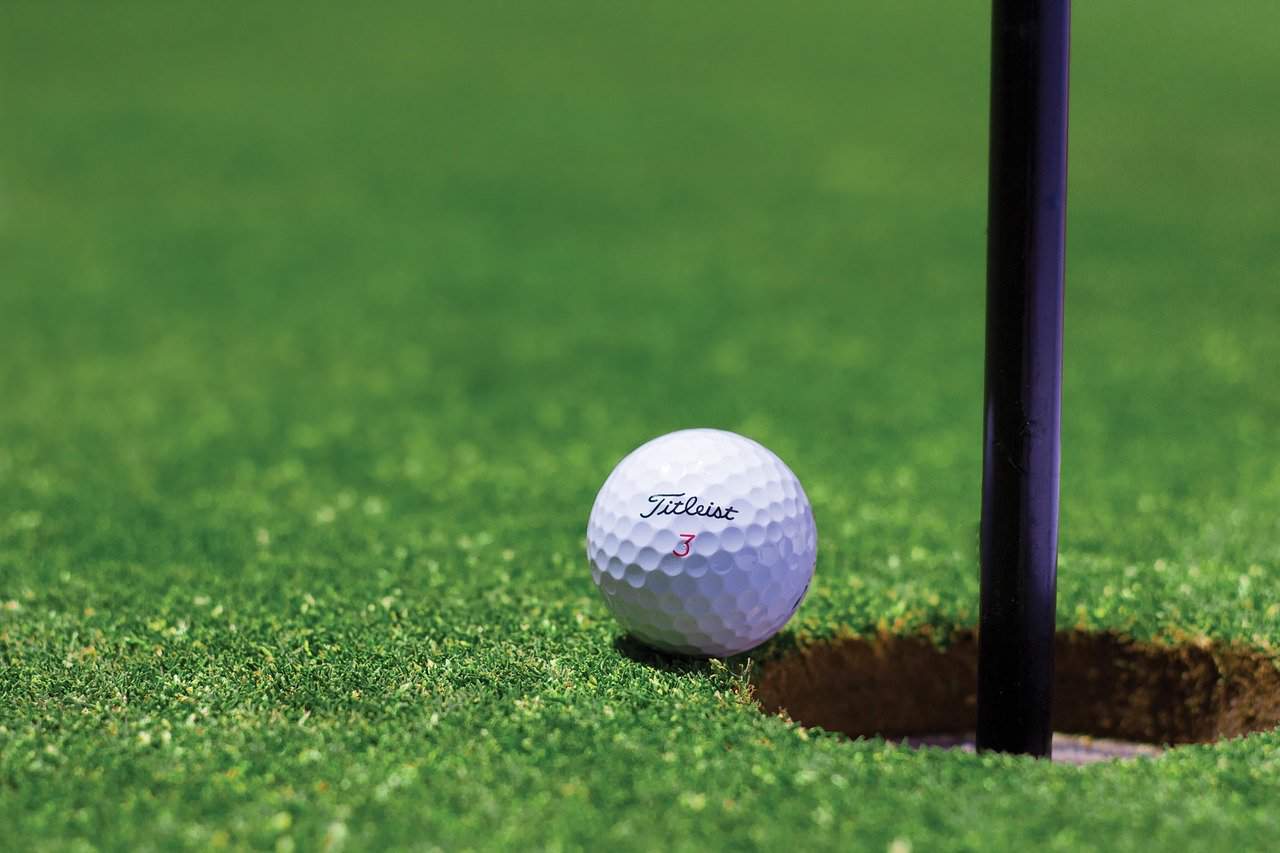
Four-Piece Golf Balls:
Each layer in this model has a specific purpose, and they work together to provide the softest feeling and most extended hitting. The innermost core contains a solid rubber center designed to provide great distance with the help of a driver—the next layer helps transform the energy from the strikes to the core. The following extra layer produces a mixed iron feel and spins around the green.
The outer concealing cover is where the entire feel of the ball is present. This covering contains around 300 to 400 dimples and is the thinnest layer available. It’s made using Urethane material, which is soft and durable. These golf balls travel long distances; popular four-piece options include:
Titleist Pro V1x, Callaway Chrome Soft, and Srixon Z-Star XV.
Five-Piece Golf Balls:
Then you are sure to be in awe of these complicated five-piece models. The TaylorMade TP5 was the first ball with five layers to enter the market. Each layer was well-engineered to provide optimum performance irrespective of the club used.
The five layers consist of the core, innermost mantle, mid mantle, outermost mantle, and cover. The low-compression, soft core promotes low spins and high launches. The innermost mantle has a soft feel and gives low spins using long irons to provide great distances and high flights.
The semi-firm mid mantle takes care of mid-spins and mid-launches using the middle irons. The outer mantle delivers optimum spins using short irons to get the ball to stop quickly. As for the urethane covering, it has a higher spin rate and a soft feel.
It is important to know that 5-piece (and 4-piece) construction balls are more suitable for professionals and single-digit or scratch golfers who have higher swing speeds to fully benefit from the 4 and 5-layer constructions. High handicappers or double-digit golfers are better off with Two or three-piece golf balls that offer more forgiveness and enhanced distances even with slower swing speeds.
Types of Golf Balls Spin
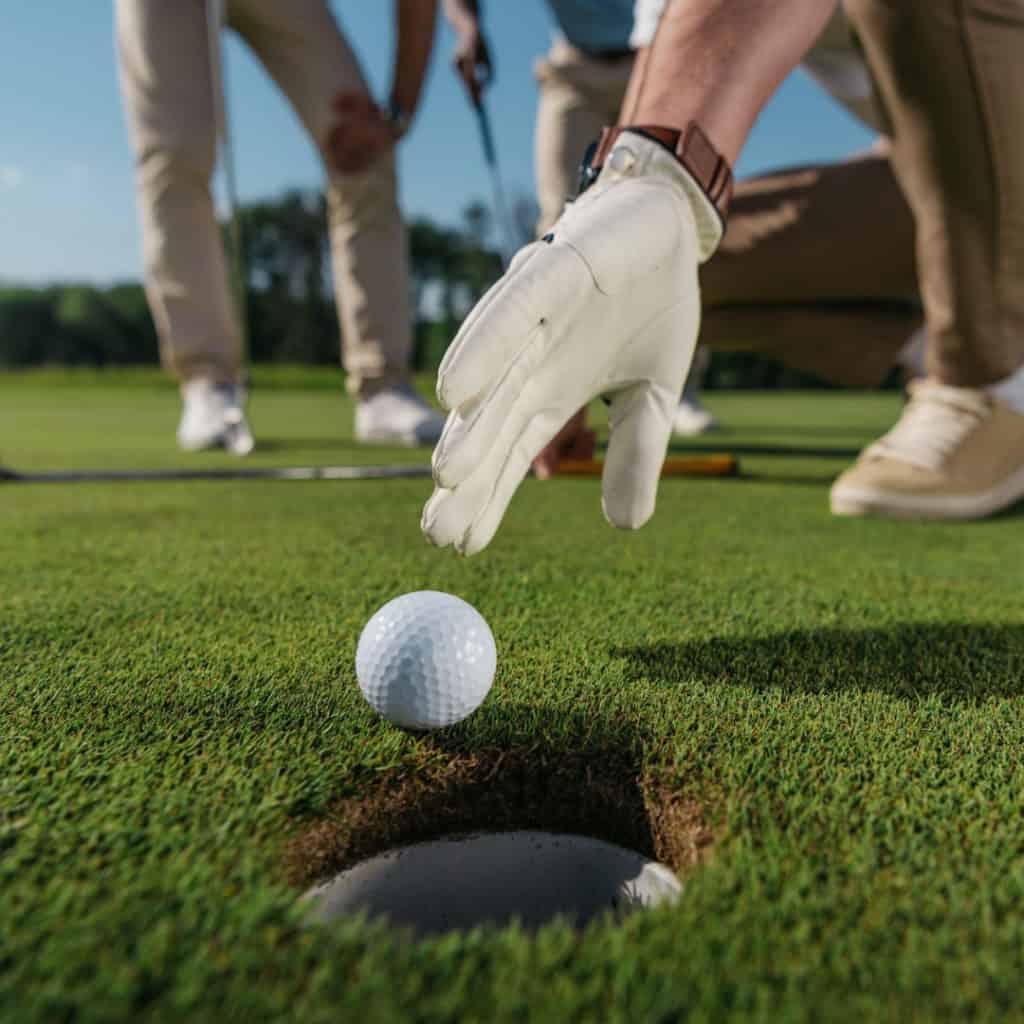
Golf balls are specially created with 3 different types of spins, including low spins, mid spins, and high spins. This refers to the backspin that’s produced using the loft of the golf club.
Low Spin Golf Balls:
Low spin balls roll a great deal on the fairway. Even with slower swing speeds, golfers can attain greater distances. These lower-spinning models tend to reduce the side-spinning of the shots and permit the ball to fly straighter through the air.
However, you may not get the long distance in the air, but the low spin will cause more rolling as it lands. That is, they have minimal stop control over the green compared to the high-spin models. This makes them an excellent option for those who struggle to gain more distance on the ground.
These balls are also suitable for those who find it hard to keep the balls in the fairway and struggle with hooks or slices. For most average players, using this model gives them the most significant distance from the tee. Moreover, the ones with a hard covering have better durability than the higher spin options.
Mid Spin Golf Balls:
The mid-spinning models lie in between the lower spins and the high spin options and bridge the gap between them. This makes them suitable for golfers who have average swing speed and control.
If you are a golfing enthusiast who needs more forgiveness but has a low tendency for slicing, these mid-spin options will work well for you. They’re capable of incorporating a solid feel along with the best distance. This makes this type suitable for most avid golfers, and they can be used in most conditions.
High Spin Golf Balls:
High-spinning balls are mainly designed to enhance the ball’s spin off the tee and help propel it in the air. When you hit a ball, it’s released into the air with a sufficient degree of backspin. This ball can further increase this backspin, thereby creating a longer carry distance. The extra spin can make the ball fly higher, easily spin out of control, and stop quickly.
These are a favorite among players who prefer to have more control and stopping power. They are also great for those with slower swings and who can’t generate enough spin naturally. The most significant advantage of these balls is around the greens or on approach shots. It is due to the enhanced feel they offer on and around the greens, which provides the players with improved control.
Distance Balls

Distance golf balls have a thin and firm covering and a larger core with a multi-layered design. This enables them to have maximum carry, thereby boosting the yardage, particularly from the tee box. Moreover, they minimize the spin that might exaggerate hooks and slices.
Consider the core of the ball as its engine since it can make the ball travel further. With the combination of the thin cover and the large core, once you hit the ball, it moves quickly from the clubface and launches with the highest speed. When you hit the golf ball, the impact determines the velocity, spin rate, and launch angle of the ball.
Some balls are specially created to maximize distance with the help of shorter clubs, whereas some increase the distance using the driver. Choosing the best golf balls for distance is entirely based on your expertise level and how it comes off from your clubface.
Combo Ball Packs
Combo ball packs include a combination of different types of golf balls in a golf ball set. This includes numerous options like ones having high compression cores, made using urethane coverings, ones with mantles, and so on. However, all of them are suitable for swinging in their respective categories. Different colored golf balls for ladies are available, which makes them easier to identify.
You can find combo packs of soft and hard balls. The soft golf balls are suitable if you have a slower swing speed, whereas the harder ones work well for players with faster swings. You may also come across combinations with different distances.
Soft Feel Golf Balls
Soft-feel models are mostly preferred by expert players and every Tour Professional. They come with a soft urethane cover with a rubber core, standard among the five, four, or three-piece balls. Though they’re not as durable as the firm feel models, they offer better spin and control across the greens.
Low-compression balls and some high-compression models which have multiple layers provide the players with a soft feel. The softer feeling allows the players to work the ball into the air and spin them into the pins. Even though they do not offer greater distance as a firm feel option, they’re best suited for golfers who require more control.
As you hit the balls using your club, it deforms slightly as a result of the impact. This temporary shape change gets the balls to spring forward as you hit. You will find that low-compression models encounter more deformation, which enables the players with slow swing speeds to make a spring-like effect. It generates lesser spins and straighter shots with more distance. This is the reason why all low-compression balls feel quite soft.
Firm Feel Golf Balls
Firm-feel balls have a hard feel on the clubface. These are mostly present among the two-piece construction models or the low-spin balls. They help produce maximum distance from the irons and driver by sacrificing some degree of control around and on the greens. Moreover, they contain a solid rubber core, which gives them hardness and better distance. These firm-feel balls are much more durable, compared to soft-feel ones.
Compression
Compression is the measurement of the golf ball’s deflection when it’s struck. It is usually measured between 0 to 200, where 0 is the level where the ball deflects up to 5 mm or above, and at 200, the ball doesn’t compress. On average, most golf balls’ compression rating lies between 50 and 100.
Compression occurs when your golf ball squishes after it comes into contact with the clubface as you swing. In this manner, the club helps in propelling the ball forward by compressing it during impact, thereby interacting with the core.
You will find that two factors come into action during compression. These are the core of the ball and the swing speed. The higher swing speeds cause a more significant impact when you hit the ball, thereby causing higher compression. As a result, the ball’s core acts as the engine that drives it to a longer distance.
Lower compression balls have greater deformation upon impact and come in contact with a bigger surface area on the clubface. They are softer and suitable for novice players or those having slow swing speeds. In contrast, the high compression models need higher swing speeds to obtain maximum control and activate the ball’s innermost layers.
They do not deform that easily and require a harder and much faster impact to make changes to their shape. These are mostly used by highly skilled golfers who possess high swing speeds.
As beginners, keep in mind that if you have a high swing pace and require a soft feel ball, you can opt for the low compression balls. However, if you’re someone with a slower swing speed, don’t even think about wasting your time with a high-compression model.
Now that you understand how compression affects ball performance, choosing the right ball for your swing speed becomes crucial. For golfers with swing speeds exceeding 105 mph, maximizing distance often takes priority. If you’re a hard-hitter looking for a ball that can keep up with your power, dive deeper into our guide on golf balls for high swing speed.
Here’s a video (7 minutes 40 seconds) from Mike Bury that can further guide you when choosing a golf ball that can best benefit and improve your golf game.
Types of Golf Balls
Though you are aware of the construction and anatomy of the balls, you might still be wondering which are the best types of golf balls. You can find the right one that suits your style by understanding the different categories to choose from. Golf balls are available in 2 types. This includes spin control and tour performance balls.
1. Spin Control
Some amateur players wish to get rid of slices or hooks. For them, spin control models work great. These are specially designed to hit the ball straight to cut down on excessive side spins that cause slices and hooks. This makes them similar to straight golf balls. Popular spin control balls include Bridgestone’s e6 Soft and e6 Speed.
This type can be further divided into the straight distance and soft distance sub-categories. The former (usually with a 2-3 layer construction) usually has a larger core and thinner outer layer and is designed to offer maximum distance. The latter has a lower compression rating and is more beneficial to players with slower swing speeds.
2. Tour Performance
Seasoned and mid to low-handicap golfers opt for these multi-layered golf balls because they provide a complete package. The multiple layers function well with one another to provide optimum spin, feel, and distance. Each layer gets activated depending on your swing speed and the club you are using.
Also, the different mantle and core layers enhance the feel and control, enabling you to sculpt shots. This, in turn, creates an extra spin on the green and gives the distance you need. The thin material covering offers additional spin control, which gives serious golfers the crisp feel they require. They are mainly used by the best-experienced players across the globe. The standard tour performance balls are Titleist’s AVX, Pro V1, and Pro V1x, TaylorMade’s TP5 and TP5 X, as well as Callaway’s Chrome Soft.
Tour Value balls are similar to the tour performance but usually come with lower compression ratings and spins and are cheaper, making them better for more skilled golfers looking for more budget-friendly options.
Golf Balls Prices
Purchasing a golf ball pack can be a costly affair for novice players because they usually lose most of the balls in the water, woods, or other places. That’s why they tend to scoop up the balls whenever they find them, be it in the course pond or lake. However, remember that the balls that have been in the water for a long time will not travel long distances. Expert and avid golfers avoid this option as they can’t bear to lose out on distances.
The best golf balls are available in various pricing ranges in the market; however, they’re put into different categories. You will find the two-piece distance balls in one spectrum, whereas the five-piece tour models in the other. Generally, the two-piece distance balls are available for between $20 – $30 for a dozen. Five-piece tour models, on the other hand, usually go higher than $50.
Which Golf Balls Are Suitable for Women?

The best golf balls for women mostly sport the two-piece construction. This construction offers extra control, distance, and durability. As women generally have a slower average swing speed of around 60 to 70 mph, it’s better to look for golf balls that give more leverage. Also, choose balls that are soft and have a compression rating that lies between 45 to 70.
This is because they are easier to hit and enable you to proceed to the next level. As to whether you need soft or hard feel options, it’s entirely based on your personal preference. Avoid going for cheap golf balls as they can ruin your performance.
Frequently Asked Questions
Let’s now go through some of the most widely asked questions related to golf balls and provide answers for them!
What Are Golf Balls Made Of?
The modern golf ball consists of mainly 2 types of cover materials. These are the surlyn cover and the urethane composition.
– Surlyn is a commonly used cover and is an ionomer resin made by DuPont. It has a slightly harder feel and is scratch-resistant and durable. It’s an excellent choice for novice golfers but not suitable for low-handicap players as it does not give much backspin. The primary effect of this cover is that it’s capable of delivering sufficient energy transfer to maximize the distance.
– Urethane is much softer when compared with Surlyn to provide more feedback and feel. Although it’s not as durable, you can find it among the high-end multi-layered golf balls. This is because it can create more control and spin during short games. It’s preferred by skilled and seasoned players as it has the potential to shape the shots to give a better performance.
The core of the ball is usually made of rubber or other synthetic materials, while the additional layers in multi-layer construction balls are often made from materials like synthetic rubbers to enhance feel and optimize performance.
How Much Does a Golf Ball Weigh?
As per the USGA and R&A golfing rules, the golf ball must not have a mass of more than 1.62 ounces or 45.93 grams. A diameter not below 42.67 mm or 1.68 inches is capable of performing within a specific distance, symmetry limits, and velocity.
Similar to golf clubs, these golf balls must have approvals and undergo testing by the United States Golf Association and R&A. The balls that do not meet the standards and regulations will not be suitable for use in competitions.
What Do the Numbers on Golf Balls Mean?
The numbers on the golf ball have various meanings:
– Single Digit: The single-digit number present below the brand is for identification purposes. For instance, if 3 to 4 individuals are playing golf using the same golf ball, then it’s advisable to use balls with different numbers. This will help you to distinguish one ball from the other after each round. The numbers most likely lie between 1 and 4. However, numbers between 0 and 9 are also acceptable.
– Two-Digit: The golf balls with double-digit numbers indicate the compression rating of the ball. Balls that have a lower compression rating of about 70 to 80 are suitable for slow swingers (including women). The ones above 100 mean you have to swing hard to get the ball working properly, making them apt fast swingers. The presence of compression rating digits on golf balls was familiar during the 1990s and is hardly standard these days.
– Three-Digit: Golf balls with three-digit numbers ranging from 300 to 400 represents the number of dimples present.
You might have noticed that modern balls usually still have a single digit (showing which ball belongs to whom), while compression and dimple count markers have mostly been dropped and are no longer present on the balls.
Why Do Golf Balls Have Dimples?
Dimples are specially designed small indentations that are present on the ball’s surface to decrease drag and control its trajectory.
Although they appear to be simple, you should never disregard their significance. Smooth-surfaced balls will travel only half the distance of those with dimples.
Dimples create a thin and turbulent layer of air around the ball which clings to its surface and goes ahead around the back of the ball. This reduces drag and allows the ball to achieve optimal lift and maintain a stable trajectory.
Dimple patterns and counts differ based on the ball type and the brand you are using. The number of dimples, size, depth, and shape will impact how your ball will perform during the flight.
How Many Dimples Are There on a Golf Ball?
There does not exist a specific answer to this question. You will find around 300 – 500 dimples on golf balls. The most common amount of dimples ranges between 336 and 392 with an average depth of approximately 0.010″.
What Is the Best Golf Ball for Me?
To determine the best golf ball for you, several factors should be considered, including your skill level, swing speed, playing style, and personal preferences.
Additionally, factors such as desired distance, control, spin, and feel should be taken into account. It is recommended to try different ball types, consult with professionals or golf retailers, and consider your specific needs to find the golf ball that suits your game the best.
Conclusion
Each of the elements that constitute a golf ball will have a considerable impact on your game. That’s why it’s necessary to select the Types Of Golf Balls that help you improve as a golfer.
With the help of detailed research and golf ball reviews from customers, you can gather all the necessary information to help you choose the right golf ball.
For those looking to elevate their driving game beyond equipment selection, our guide mastering the driver swing offers practical advice on perfecting your stance, grip, and swing mechanics to hit the ball longer and straighter.
Please, do share your feedback with us about how well your new golf ball impacted your performance.
Thanks for reading!



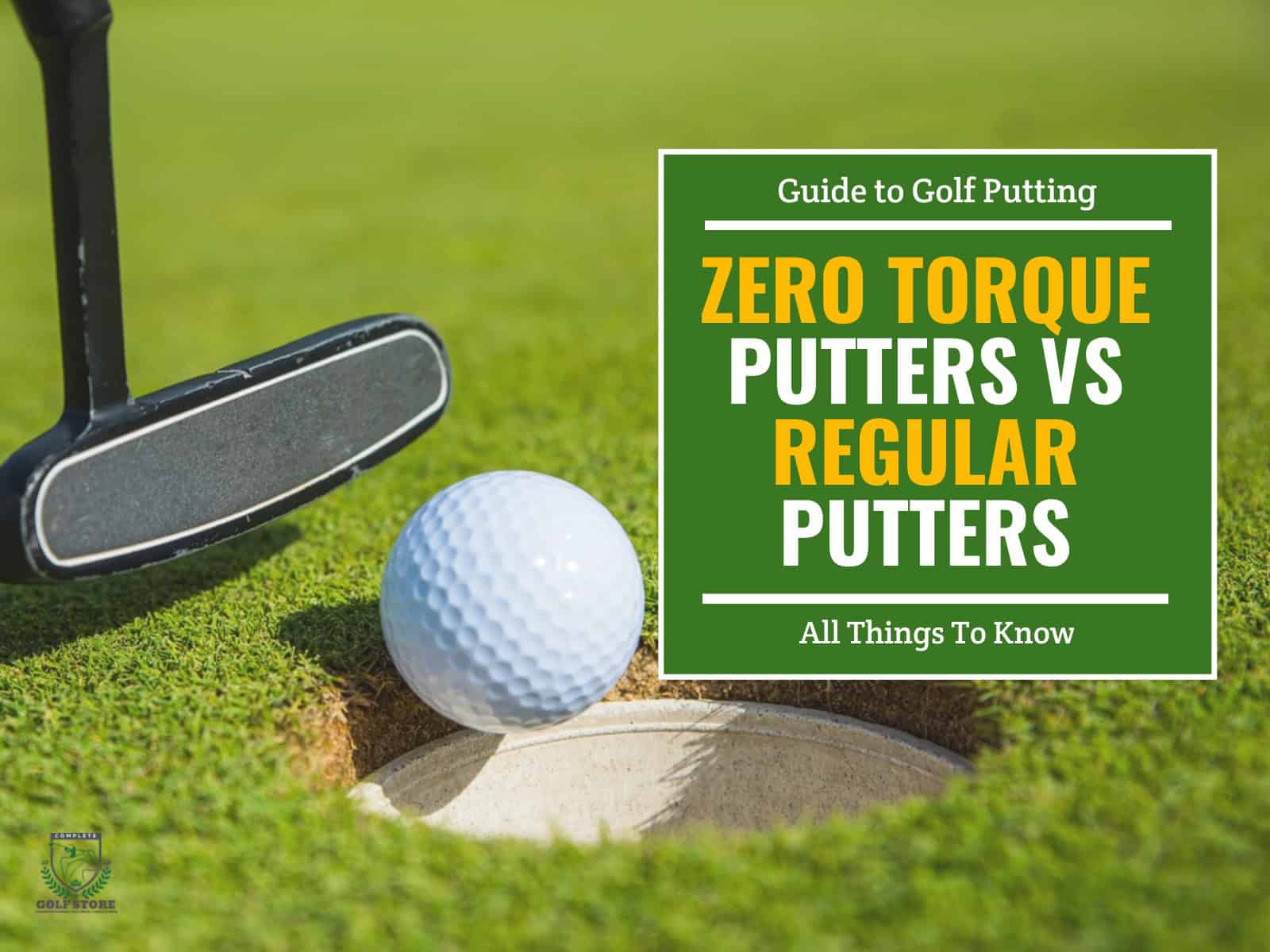
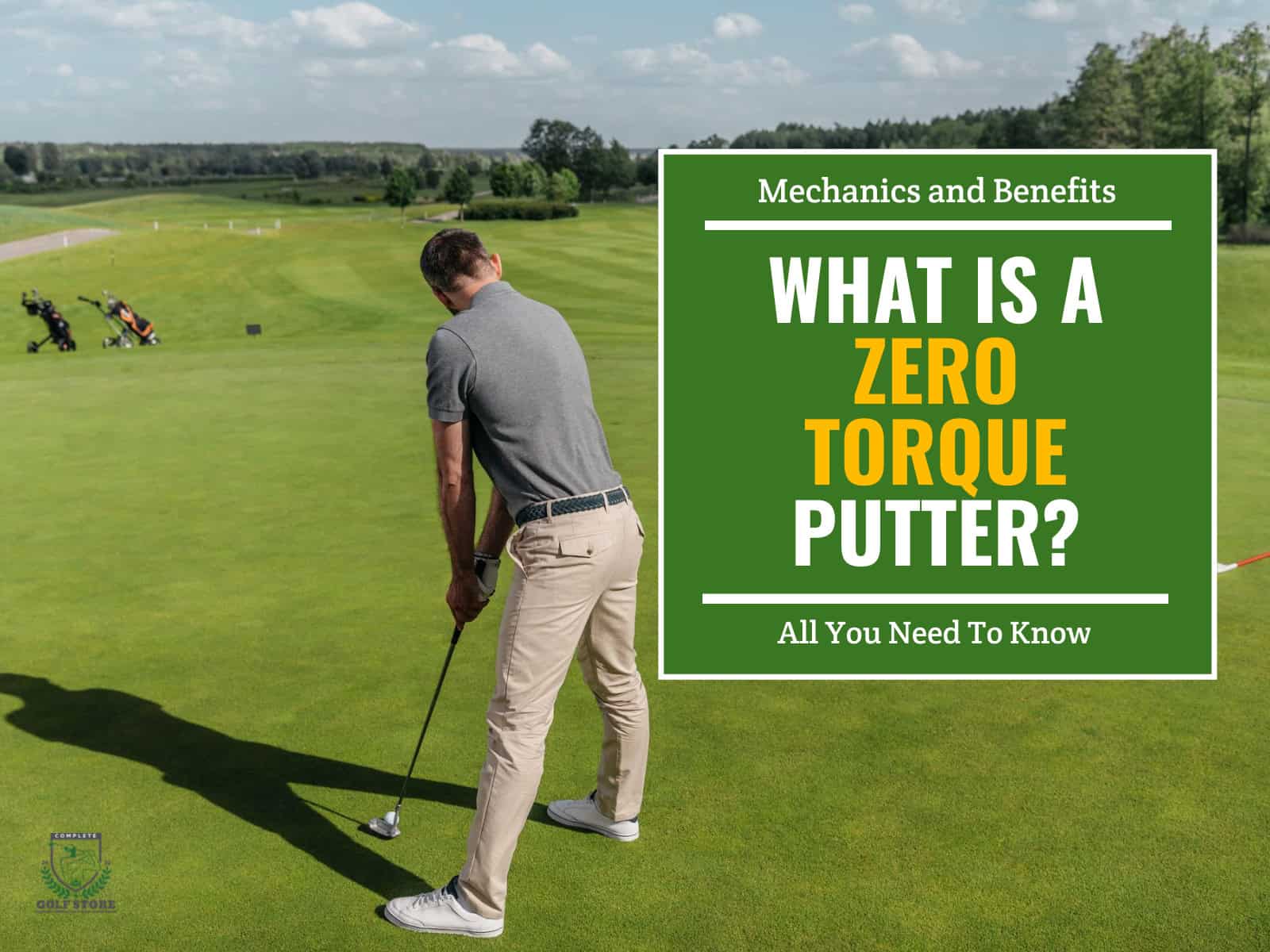
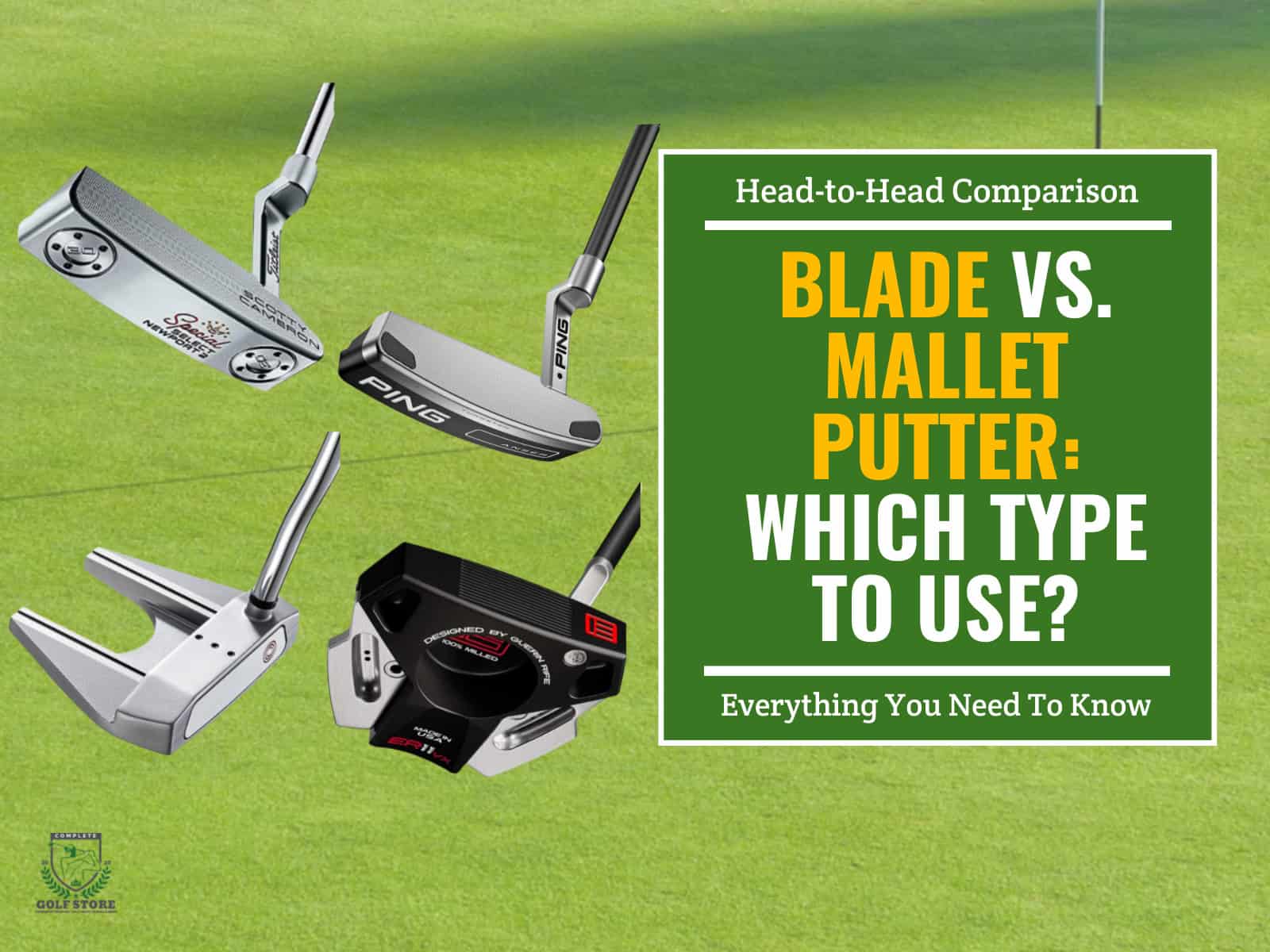
Subject article was very good. The following comment is for your information only. The third paragraph of the article is titled, “Types of Golf Balls Construction.” It describes the types of ball construction. The fourth paragraph of the article is titled, “One-Piece Golf Balls.” In this fourth paragraph, there is not a word describing what a one piece ball is. The fourth paragraph repeats the wording of the “Types of Golf Balls Construction” paragraph, word for word. Seems like an error. Might want to correct it?
Hi Robert,
Thanks so much for your comment,
Yes, it was an error, I’ve gone ahead and corrected it.
We are so fortunate to have users like you!
Thanks again for taking the time to warn us about the error, much appreciated!